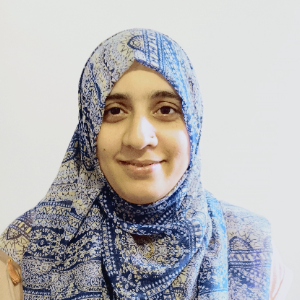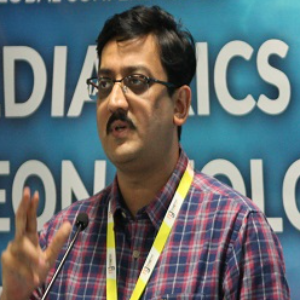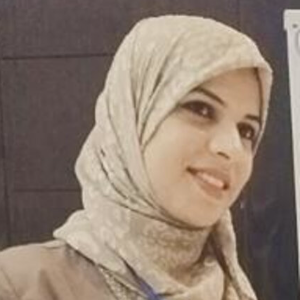Zhenhuan Liu, Guangzhou University of Chinese Medicine, China
Objective: To investigate the effect of and Acupuncture on brain plasticity and motor development in children with cerebral palsy. Investigate effect on mechanism of apoptosis of brain nerve cells, regulating the expression of neurotrophic factors, promoting the remodeling of ner [....] » Read More



























Title : Risky business or business as usual? Adrenaline autoinjector use in pediatric food allergy
Heather Hanna, Imperial College, United Kingdom
The risk of fatal anaphylaxis in a food allergic child is much lower than their risk of accidental death from most other causes, yet the possibility of this very rare but devastating event is a major focus for families of pediatric patients and healthcare professionals dealing wi [....] » Read More
Title : Accurate measurement and documentation of the neonatal heart rate immediately after birth
David J R Hutchon, Memorial Hospital, United Kingdom
All guidelines recommend that the heart rate of the neonate is determined at birth. This is particularly important in the potentially asphyxiated neonate that does not breath regularly after birth. Auscultation is the recommended method but this is not documented in real ti [....] » Read More
Title : Bridging the gap between early detection of autism prodrome in infants and intervention
Hanna Alonim, The Mifne Center for Treatment Research and Training, Israel
The worldwide prevalence of autism points out of 2% of the population. Clinicians and researchers increasingly realize the importance of early intervention for autism. Very early intervention may minimize the severity of the phenotypic presentation of autism during infancy [....] » Read More
Title : Neonatal care empowerment at LMIC hinterlands – The Nigerian Neonatal Rescue Scheme template
Hippolite Amadi, Imperial College London, United Kingdom
Low- and Middle-income Countries (LMICs) in Africa, such as Nigeria have challenges of unsustainable basic infrastructure. This does not allow for competitive, independent, and progressive healthcare system. There is high dependence on unaffordable importation of needed technolog [....] » Read More
Title : The only way is ethics?
Heather Hanna, Imperial College, United Kingdom
Pediatric Practice often presents us with ethical dilemmas which may be very nuanced. As practitioners we need to have an excellent understanding of ethics and ethical frameworks and an appreciation of how these considerations may color our decision-making process as we practice [....] » Read More
Title : Pre-Adult biological optimization for inclusive maximization of human potential
Walter Harvey Crompton, Yuvan Research, Inc, United States
Non-invasive optimization of developmental growth, immunity and repair factors, derived from extant and emerging adult and veterinary medical interventions, and repurposed for prenatal and pediatric application, holds profound humanitarian potential for inclusively enhancing long [....] » Read More
Title : Effectiveness and cost-effectiveness of an electronic mindfulness-based intervention to improve maternal mental health in the peripartum: A randomised controlled trial
Grace Branjerdporn, Mater Research, Australia
Introduction: Women in the peripartum period are highly vulnerable to developing mental health issues, particularly with the COVID-19 pandemic exacerbating distress levels. Relaxation strategies and access sto support services has been identified as a potential intervention in su [....] » Read More
Title : The role dietary heavy metals play in the epigenetic inheritance of autism and ADHD
Renee J Dufault, Food Ingredient and Health Research Institute, United States
In 2021, the US Congress found heavy metals problematic in the American baby food supply but took no action. Heavy metal residues are pervasive in the United States (US) food supply and allowed by the Code of Federal Regulations because of food ingredient manufacturing practices. [....] » Read More
Title : An observational study on Vasopressin in a cardiac PICU
Sajini Ramakrishnan, East Midland Paediatric Deanery, United Kingdom
Introduction and Aim: This observational study aims to find out whether vasopressin improves hemodynamic parameters of the children during ICU stay, compare 30 day survival of vasopressin cohort with the NCHDA data and the adverse effect profile. Methods: [....] » Read More
Title : The effectiveness of maternal cord blood levels of neutralising antibodies (nAbs) in providing protection from Respiratory Syncytial Virus (RSV) infections in infants below 6 months of age: systematic review and meta-analysis
Muhammad Pradhika Mapindra, Elizabeth Garrett Anderson Institute for Women’s Health, United Kingdom
Background: Respiratory Syncytial Virus (RSV) is known for the most prevalent cause of lower respiratory tract infections (LRIs) and hospitalization in children under-five worldwide. Adaptive immunity and long-lived immunological memory remain underdeveloped and attenuated in ear [....] » Read More
Title : Coeliac disease screening in children with newly diagnosed type 1 diabetes mellitus
Padma Fordham, University of Birmingham, United Kingdom
Background: Type 1 Diabetes Mellitus (T1DM) is prevalent amongst children in the UK, with 3,883 diagnosed between 2021–2022, exposing them to an increased risk of Coeliac Disease (CD). Missed diagnosis of CD can cause negative sequelae including malnutrition, grow [....] » Read More
Title : Coeliac disease screening in children with newly diagnosed type 1 diabetes mellitus
Lucy I Porter, University of Birmingham, United Kingdom
Background: Type 1 Diabetes Mellitus (T1DM) is prevalent amongst children in the UK, with 3,883 diagnosed between 2021–2022, exposing them to an increased risk of Coeliac Disease (CD). Missed diagnosis of CD can cause negative sequelae including malnutrition, grow [....] » Read More
Title : Improving compliance with Delayed Cord Clamping (DCC) in preterm infants < 34 weeks
Moustafa Eldalal, Lewisham & Greenwich NHS Trust, United Kingdom
Background: We opted to do this quality improvement project to improve one of the main elements of the perinatal optimization care. Aim: The primary aim was to perform DCC to all babies <34 weeks who are born in good condition. The secondary aim was to differentia [....] » Read More
Title : IL28B genetic variation association with spontaneous clearance of hepatitis C virus in children
Mariam Kapanadze, European University, Georgia
Introduction: Despite the rapid development of clinical medicine, In the XXI century, nevertheless, a number of unresolved and problematic diseases remain. One of the most acute and global problem for modern medicine is hepatitis C. Georgia belongs to high prevalence c [....] » Read More
Title : Novel bilateral symmetrical congenital transverse upper and lower limb deficiencies in siblings in Ethiopia
Amen Samuel Melaku, Alert Hospital, Ethiopia
Background: Transverse congenital limb deficiency is a common limb deficiency where there is normal limb development until a certain point beyond which no anatomical structure exists. Typically, this presents as an isolated and spontaneous abnormality as a result of arrest during [....] » Read More
Title : COVID Multisystem Inflammatory Syndrome in Children (MIS-C)-experience from resource-limited country
Mari A Darakchyan, Yerevan State Medical University, Armenia
Multisystem inflammatory syndrome in children MIS-C is a Covid-19 postinfectious syndrome with the mainly severe presentation of multiple organ involvement, mainly the cardiovascular system. The MIS-C contributed to PICU admission due to cardiovascular instability. We treated 22 [....] » Read More
Title : Is vitamin D deficiency genetic or epigenetic?
Gulsen Meral, Biruni University, Turkey
Since vitamin D is known to be associated with cancers, autoimmune diseases, diabetes, cardiovascular disease, allergies, depression, as well as bone mineral density, vitamin D deficiency emerges as a serious health problem. . Considering the mechanisms involved in the immune mod [....] » Read More
Title : Clinical outcomes of neonates born to COVID-19 positive mothers in a tertiary level private hospital
Patricia Abigail B Miranda, St. Luke’s Medical Center, Philippines
Introduction: COVID-19 infection is a novel viral illness which began as a local epidemic in December 2019 at Wuhan, China which quickly emerged into a pandemic by February 2020. The virus causes a spectrum of signs and symptoms, ranging from mild upper respiratory symptoms to ac [....] » Read More
Title : Neonatal diseases and disorders
Ben Achor Angelica Ijeoma, Astrakhan state medical university, Russian Federation
Neonatal diseases are a group of diseases that disturb the normal state of the body, organs and functions of a newborn. These disorders are categorically unique due to the normal physiology of a developing neonate. Birth trauma, Neonatal jaundice, meningitis, Anaemia, blood disor [....] » Read More
Title : Implementation and outcomes of a newborn screening protocol for congenital cytomegalovirus infection via saliva samples testing in a tertiary medical center
Pei Chen Tsao, Taipei Veterans General Hospital, Taiwan
Statement of the Problem: Congenital Cytomegalovirus (cCMV) infection is the most common cause of non-genetic hearing loss in childhood, which might be underestimated due to the unrecognition of most infected newborns lacking clinical manifestations at birth. We conducted a prosp [....] » Read More